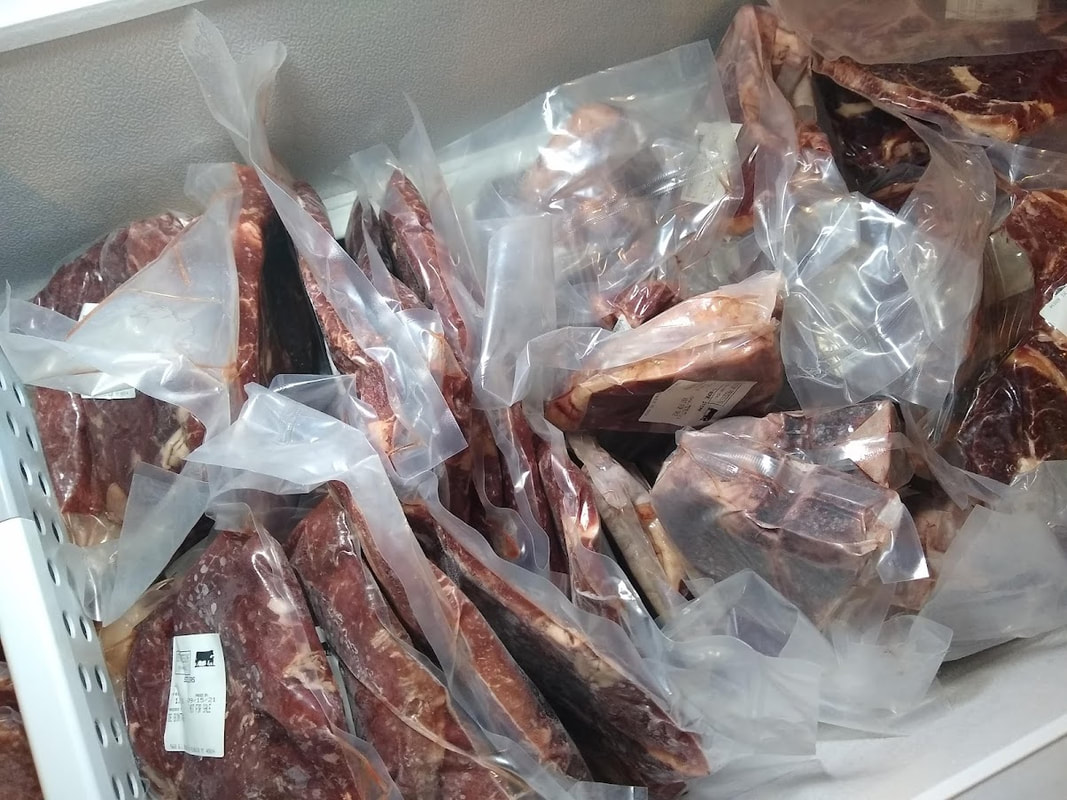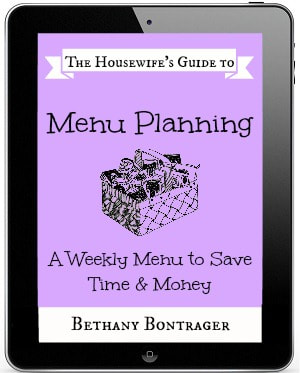When I wrote The Housewife's Guide to Frugal Food, I did some quick calculations to see if one could save money by raising one's own beef cow. Here's a direct quote from the book:
"If you are interested in buying grass fed or other specially raised meats, it may be better to buy a whole or half animal. Keep in mind though that some animals are sold by their live weight, which includes the fur, skin, bones and other non-edible parts. Other animals are sold by "hanging weight"; how much the animal weighs at the butcher when the head, feet, organs, hide and blood are removed. This weight still includes the bones and a lot of other non-edible parts, and you might get 60% of the hanging weight back in actual meat. If you pay $2.00/lb. hanging weight for a beef cow, as an example, you will be paying more like $3.33/lb. for the actual meat. This price, then, is for ALL of the meat you get, from sirloin to stew meat."
I go on to list different percentages for different animals, and ultimately come to this conclusion:
"If you just want to buy supermarket quality meats, I would say it is a better deal to buy single cuts. Why? Because when you purchase a whole animal, the price of the more expensive cuts are factored into the price of the animal along with the cheaper cuts like ground beef or chuck roast. If you are trying to save money, you ONLY want the cheap cuts. Plus, if you purchase a whole animal there will probably be several pieces of meat that will go to waste because you don't know how to cook them, or don't like them."
As with most of my opinions, I still stand behind this one. That being said, it's been several years since we left full-blown frugal mode, and a grass-fed steak now and then sounded nice. So last year I decided to buy a 6-month-old calf to raise for beef.
How Much to Raise a Beef Animal?
First: the labor costs.
Adding a beef cow to our homestead was not a ton of extra work. We did have to make paddocks in our pasture, which was a pain (especially without a spinning jenny... don't EVER try to unroll fencing without a spinning jenny...). The other big headache was dealing with the steer when he got out, since he was too big to manhandle and sometimes too stubborn to be lured back into the pen with a bucket of feed. BUT, he only escaped through areas of fence that were non-electric; that is, the hog panels that we'd previously put up for goats. They were fabulous for goats—child's play for Steer. He mangled several new-looking hog panels during the last part of his stay here.
Other than that, the only extra work was feeding hay in the winter, switching paddocks in the summer, and keeping him supplied with water (harder in the winter than the summer). I bought a tank de-icer, which Steer promptly ripped from his tank. So basically I had to water him daily and hope he drank most of the water every day, otherwise ice would build up on the side of his water container.
Second: the financial costs.
So here is the fun part. I'm going to list the big costs, then some of the other things I bought that we'll be able to use again (and therefore can't be directly applied to the cost of this one steer).
Calf (6 months): $300.00
Hay: $360.00
Processing: $390.00
Total costs: $1050.00
Some other things we bought were: extra fencing, tank de-icer, a little corn (25 lb?). We had a salt block and some other things already, which was nice. Steer did mangle up some hog panels and also ate some of my strawberries, so technically you could add those costs to the list as well.
Third: how much meat we got in return.
The processer we chose (actually, we didn't have much of a choice... all of the others were booked out; some to 2023!!) didn't give us a total of how many pounds of meat we got in return. Since all of the packages were a slightly different weight, we had to estimate a total poundage. We did know the hanging weight, and figured that we got about 50% of that weight back in meat, for a total of 300-325 lbs.
And now... for the final calculation.
$1050.00 divided by 300-325 lbs. of meat equals:
$3.25 - $3.50 per pound.
That's truly not a bad price, if you compare it to store-bought grass fed and organic meat ($5.00 per pound for ground beef). While ours wasn't certified organic, it ate unsprayed grass and hay for a majority of its life and thus, was probably much more organic than something raised in a feed lot.
When you compare those prices with store bought prices for steak, it looks vastly more economical. And not only that, we were spendy and got a whole armload of snack sticks and hamburger patties, which added $47.00 to the processing cost. If you subtract those things, the cost per pound goes down to $3.09 - $3.34.
Is It Worth Raising a Steer?
My short answer? Yes. My long answer? Yes, but I wouldn't want to do it every year. I'm hoping to make our $1050.00 freezer full of meat last for several years. While $3.50 per pound is a good price when you compare apples to apples, it's not a great price when you compare apples to oranges—or rather, beef to chicken (which is what I do in The Housewife's Guide to Frugal Food). So I still plan on doing beef meals just a couple times a week; certainly not every day.
One thing I do appreciate about this project is that we've found one more food item we can produce, in part, at home. You could butcher the whole cow at home (we've done it before), but we chose to have ours professionally done this time in order to have the different steak cuts rather than just ground beef, roasts and butterfly steaks. We figure that the processing added about $0.94 per pound to the price of the meat, and thought it was well worth it to have the steer processed properly and packaged well.
****
Til NeXt time,
-Bethany







 RSS Feed
RSS Feed





